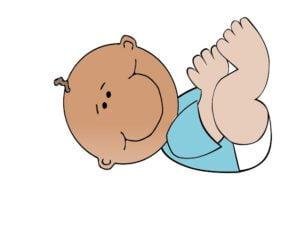Discover the world of diapering as we dive into the pros and cons of cloth and disposable diapers, helping you make the best choice for your baby and the environment.
Introduction
Welcoming a new baby into your family is an exciting time, but it also comes with a myriad of decisions to make, including the all-important choice of diapers. With countless options available, this seemingly simple decision can feel daunting. This comprehensive guide will take you on a journey through the world of cloth and disposable diapers, revealing their pros and cons, and helping you make an informed decision that meets your family’s needs and values.

1. What are Cloth Diapers?
Before diving into the various types and materials of cloth diapers, let’s take a moment to travel back in time and explore the history of cloth diapering. For centuries, parents used simple cloth materials to keep their babies dry and comfortable. It wasn’t until the 20th century that cloth diapering saw significant improvements with the introduction of new fabrics and designs.
- A brief history of cloth diapers
Historically, cloth diapers were made from readily available materials such as cotton, linen, or wool. In the mid-20th century, advances in fabric technology led to the development of more absorbent materials, making cloth diapers increasingly popular among parents. Today, cloth diapering is experiencing a resurgence, as many families seek eco-friendly and cost-effective alternatives to disposable diapers.
- Types of cloth diapers
Modern cloth diapers come in a variety of styles and designs, making it easy to find the perfect fit for your baby. Some of the most popular types of cloth diapers include:
- Pre-folds: These traditional cloth diapers consist of a rectangular piece of absorbent fabric that is folded and fastened around the baby. Pre-folds require a waterproof cover to contain moisture.
- Fitted: Fitted cloth diapers are shaped like disposables and feature elastic leg and waistbands for a snug fit. Like pre-folds, they also require a waterproof cover.
- All-in-ones: These diapers have an absorbent layer sewn into a waterproof outer layer, making them a convenient one-piece option that closely resembles disposable diapers.
- Hybrids: Hybrid diapers offer the flexibility of both cloth and disposable systems, featuring a reusable outer cover and a choice of cloth or disposable inserts.
- Materials used in cloth diapers
Modern cloth diapers are made from a variety of materials designed to provide maximum absorbency, comfort, and durability. Some common materials used in cloth diapers include:
- Cotton: A classic choice, cotton is a natural, breathable, and absorbent material that is gentle on a baby’s skin.
- Bamboo: Known for its softness and absorbency, bamboo is a sustainable and eco-friendly choice for cloth diapers.
- Microfiber: This synthetic material is ultra-absorbent and quick-drying, making it a popular choice for modern cloth diapers.
- Hemp: Hemp is another eco-friendly option, providing excellent absorbency and durability.
2. What are Disposable Diapers?
As convenient alternatives to cloth diapers, disposable diapers have revolutionized the way parents handle diapering. Let’s delve into their history, types, and materials to better understand this popular option.
- A brief history of disposable diapers
Disposable diapers were first introduced in the 1940s, offering parents a convenient and time-saving alternative to traditional cloth diapers. Over the years, manufacturers have continuously improved disposable diapers’ designs, making them more absorbent, comfortable, and eco-friendly.
- Types of disposable diapers
There are several types of disposable diapers available on the market, each with its unique features and benefits:
- Standard disposables: These are the most common type of disposable diapers, made from layers of absorbent materials and a waterproof outer layer. They come in various sizes to accommodate babies from birth to potty training.
- Eco-friendly disposables: These diapers are designed with environmentally-conscious materials, such as sustainably sourced wood pulp and fewer chemicals, reducing their overall environmental impact.
- Biodegradable disposables: Biodegradable diapers are made from materials that break down more quickly than traditional disposables, making them a more eco-friendly choice for families concerned about their carbon footprint.
- Materials used in disposable diapers
Disposable diapers are typically made from a combination of materials, including:
- Wood pulp: The primary absorbent material in most disposable diapers, wood pulp helps to wick away moisture from a baby’s skin.
- Superabsorbent polymers (SAP): These tiny crystals absorb and retain large amounts of liquid, making disposable diapers more efficient at preventing leaks.
- Nonwoven fabrics: These soft, breathable materials provide a comfortable barrier between the absorbent layers and a baby’s skin.
- Plastic or biodegradable outer layers: The outer layer of disposable diapers is designed to be waterproof, preventing leaks and keeping moisture contained.
3. Comparing Cloth and Disposable Diapers
When deciding between cloth and disposable diapers, it’s essential to consider factors such as environmental impact, cost, convenience, and comfort. Let’s examine each of these aspects in detail.
- Environmental impact
Both cloth and disposable diapers have an impact on the environment, but in different ways:
- Production and manufacturing: Disposable diapers require significant resources for production and transportation, while cloth diapers’ manufacturing process is less resource-intensive.
- Waste and landfill contribution: Disposable diapers contribute to landfills, taking hundreds of years to decompose, while cloth diapers can be reused, reducing overall waste.
- Carbon footprint: The energy and water consumption associated with washing cloth diapers can contribute to their carbon footprint. However, choosing energy-efficient washing methods and line-drying can help reduce this impact.
- Cost comparison
When comparing the costs of cloth and disposable diapers, it’s important to consider both short-term and long-term expenses:
- Initial investment: Cloth diapers require a higher upfront cost compared to disposable diapers, but they can be used for an extended period, making them a more cost-effective choice in the long run.
- Long-term expenses: Disposable diapers are an ongoing expense until your child is potty-trained, while cloth diapers can save you money over time, especially if used for multiple children.
- Cost-saving strategies: Buying diapers in bulk, using coupons, and opting for store-brand disposable diapers can help lower the overall cost. For cloth diapers, investing in high-quality, adjustable options can lead to long-term savings.
- Convenience
Convenience is a significant factor for many parents when choosing between cloth and disposable diapers:
- Changing and cleaning: Disposable diapers are easy to change and discard, while cloth diapers require additional steps, such as rinsing and laundering.
- Travel and outings: Disposable diapers are often more convenient for travel, as they take up less space and don’t require washing on the go. However, many families find that cloth diapers with disposable inserts can offer a practical solution for longer trips.
- Daycare and babysitters: Some daycare centers and babysitters may prefer disposable diapers for their convenience, so it’s essential to communicate your preferences and provide clear instructions if using cloth diapers.
- Comfort and fit
Both cloth and disposable diapers offer varying levels of comfort and fit for your baby:
- Materials and skin sensitivity: Some babies may experience skin sensitivities or allergies to the materials used in disposable diapers. In such cases, cloth diapers made from natural fibers can be a more comfortable option.
- Size and adjustability: Cloth diapers typically offer greater adjustability, ensuring a snug fit as your baby grows. Disposable diapers come in different sizes, so finding the right fit may require trying different brands.
- Leak protection: Both cloth and disposable diapers can provide effective leak protection when properly fitted and changed regularly. However, some parents may prefer the added absorbency of disposable diapers, especially for overnight use.
- Diapering accessories
Regardless of your diaper choice, having the right accessories can help make diapering more manageable:
- Diaper pails and wet bags: A dedicated diaper pail or wet bag can help contain odors and messes, whether you’re using disposable or cloth diapers.
- Wipes and liners: Biodegradable or reusable wipes and flushable liners can be convenient additions to your diapering routine, making cleanups easier and reducing the mess associated with cloth diapers.
- Cloth diaper-safe laundry detergent: If you choose cloth diapers, using a gentle and effective laundry detergent specifically designed for cloth diapers will help prolong their lifespan and maintain their absorbency.
- Diaper creams and ointments: Choosing a diaper cream or ointment compatible with your chosen diaper type is essential. Some diaper creams can cause build-up on cloth diapers, reducing their absorbency, so be sure to select a cloth diaper-friendly option.
4. Making the Decision: Cloth, Disposable, or a Mix of Both?
With a better understanding of the differences between cloth and disposable diapers, it’s time to evaluate your family’s unique needs and decide on the best option for you.
- Assessing your family’s needs and priorities
Take the time to discuss and reflect on your family’s values and priorities. Consider factors like environmental impact, budget, and convenience when making your decision.
- Considering your lifestyle and daily routines
Think about your daily routines and how your choice of diaper will fit into your lifestyle. Consider factors like ease of use, time spent on diapering tasks, and travel frequency when making your decision.
- Hybrid diapering: Combining cloth and disposable diapers
Many families find that a combination of cloth and disposable diapers works best for them. This approach allows you to enjoy the benefits of both options, such as using cloth diapers at home and disposables when out and about or at daycare.
5. Tips for a Smooth Diapering Experience
Regardless of your diapering choice, here are some tips to help ensure a smooth and positive experience for both you and your baby:
- Staying organized
Keep your diapering essentials well-organized and within easy reach. Create a dedicated changing area with all the necessary supplies, such as diapers, wipes, creams, and a changing pad.
- Building a supportive network
Connect with other parents, either online or in person, to share experiences, tips, and advice. Building a supportive network can help you navigate the challenges of diapering and learn from others’ experiences.
- Embracing trial and error
Be open to trying different diaper brands, styles, and accessories until you find the combination that works best for your baby. Every child is unique, and what works for one may not work for another. Remember, patience and flexibility are key.
Conclusion
Ultimately, the choice between cloth and disposable diapers will depend on your individual preferences, lifestyle, and priorities. By considering the various factors discussed in this article, you can make an informed decision that best suits your family and helps create a positive diapering experience for both you and your baby. No matter which option you choose, remember to stay organized, build a supportive network, and embrace the trial-and-error process to ensure a smooth and enjoyable diapering journey.









[…] See Also: Diapering Essentials: Cloth vs. Disposable Diapers […]